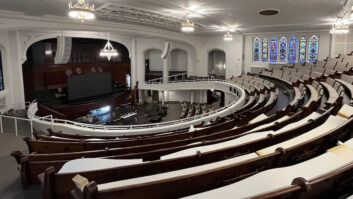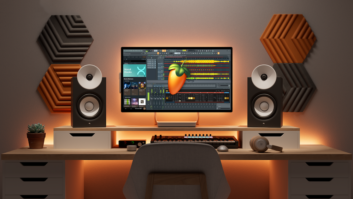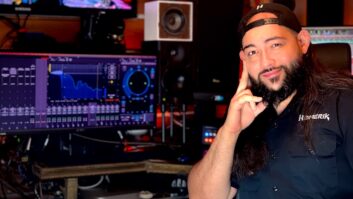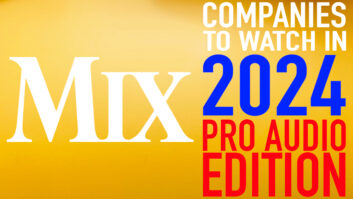Out on the beautiful, barren expanses of rural Utah, Douglas Spotted Eagle has been making a name for himself as a Native American flutist, composer and engineer. But he never suspected that name would become quite so…generic.
“I did get a comment one time from an ad agency that does a lot of work with Disney, ‘Well, when it comes to Native American music, you guys are the Kleenex of the music industry,'” Spotted Eagle recalls.
“I know I opened up a lot of doors,” he says from his unlisted project studio, Native Restoration, in Stockton, Utah (pop. 500). “I know our studio has produced more Native American music for various record labels than any other operation on the face of the Earth. I think we’ve created a new generation of native music.”
A veteran of arena rock band Krystyl and an engineer who had worked with the Osmonds, the Emmy Award-winning Spotted Eagle recorded his first solo album in 1988 on a Tascam Porta 01. “By some strange quirk of fate, that album sold incredibly well,” he says. “So I kept buying and spending all the money that was coming in from records on equipment.”
He bought a Tascam 688, then a Tascam DA-88 and finally a 96-input Tascam M5000 console with automation. Now his facility includes a 1,400-square-foot tracking room and an 18-by-19 control room in the lower third of his home, with a 24-channel Pro Tools 4.0 hard disk system (though he now makes heavy use of Sonic Foundry VEGAS) and an Avid Express video-editing system in a building next door. Clients can stay in the two guest rooms. “I should say that it’s kind of at the point now that my home is located in the studio,” he says with a laugh. “It took over quite a long time ago.”
Stockton is a small agricultural town with a fading military presence. Underground weapon destruction is a regular occurrence, which led Spotted Eagle to concentrate on insulation and isolation. The base was being shut down, so he had access to large steel I-beam rails mounted on heavy springs. “We cut the concrete slab in one of the rooms completely out, lifted it up, dug down into the ground and put in the spring-loaded rails,” he says. “Then we built cinder-block walls on top of that and replaced the concrete floor using neoprene placements.” The walls themselves were built out of treated plank cedar in a major renovation four years ago. The entire system has balanced power by Equi=Tech.
For his own CDs, Spotted Eagle goes for a sound that’s “rich and thick and chocolate, real big and brown,” he says. “Most of our instruments are traditional vocals and traditional drums, things that are very organic, and it’s really difficult to maintain that organic sound when you go all digital. We have the John Hardy M-1 preamps on the front end. You couple those with either the B&Ks or the Audio-Technicas on the front end and that goes straight to the tape deck. We only use the console for monitoring and mixing. It really makes a clean sound, and it maintains a depth and organic nature.”
Regular clients at Native Restoration include HBO, Disney and Showtime. The studio also has hosted Utah engineers Michael Green and Scott Wiley, as well as artists such as Robbie Robertson and Craig Chaquico.
Two other engineers often work at the studio: Herman Begay who has appeared on many of Spotted Eagle’s CDs and sample libraries and runs the record company, Indian Creek Media, and Linda Dee, who owns Indigenous Pictures film company. Begay’s 13-year-old son Herwin also drops in to sing and twirl knobs. “We have an open-door policy: Anybody who wants to do traditional music, we let them come in and record for materials,” Spotted Eagle says. “We really try hard to make that available. It preserves and perpetuates the musical culture.”
That culture is in flux, says Spotted Eagle, who considers himself a descendent of Lakota and Navajo nations, although he is not an official tribal member under federal guidelines. “Even what people call traditional powwow music, has changed dramatically in the last 15 to 20 years. Our powwow groups are influenced by Bon Jovi and Def Leppard and Lynyrd Skynyrd and Clay Walker and Clint Black, and I think that’s exciting because it brings a new format of lyrics and a new format of attack to the drum,” he says. “Boy, I remember being a kid and going to powwow, and if you’re lucky, a P.A. system consisted of a 4-foot Atlas horn, and nowadays, you’re seeing trapezoidal JBL cabinets and racks of power amplifiers, and it’s like going to a rock show.”
For more on Spotted Eagle, visit www.spotted-eagle.com







